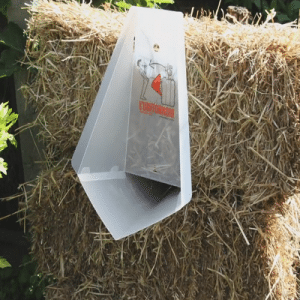
Agriculture
November 9, 2023

Updated on November 9, 2023
·Created on June 17, 2016
Pee-Power is an electricity-generating sanitation solution for decentralized areas.
Pee-Power is a prototype that uses urine as a source of power to produce electricity. The microbial fuel power has been able to generate enough power to charge a Samsung mobile phone, which enables SMS messaging, web browsing and to make a brief phone call. It has also been able to generate sufficient levels of electricity to power a LED-based lighting system for one toilet cubicle.
Plans are to develop microbial fuel cells to power indoor lighting in refugee camps and disaster areas. In phase two, the purpose is that microbial fuel cells (MFC) can provide enough power to light a 10 m radius around a block of four toilets.
The prototype has been tested on the University campus. The urinal on the campus resembles a toilet used in refugee camps by Oxfam to make the trial as realistic as possible. See video of how the Pee-Power works and video of a mobile phone running on urine power.
Market Suggested Retail Price
$950.00
Target Users (Target Impact Group)
Distributors / Implementing Organizations
The Pee-Power technology is the result of a partnership between researchers at the Bristol Robotics Laboratory, a collaborative partnership between the University of the West of England (UWE Bristol) and the University of Bristol, and Oxfam. This technology is also funded by Bill and Melinda Gates Foundation.
Manufacturing/Building Method
Manufactured at the Bristol Robotics Laboratory. This product was built from ceramic Microbial Fuel Cells (MFC) stacks with dimensions 10.2 cm (length), 3.5 cm (outer diameter), 2.5 cm (inner diameter) and approximate volume of 49 mL. For the building method, the anode electrodes were made from 337.5 cm2 of carbon fiber veil with two 10 cm length strips of 0.25 mm diameter stainless steel wire folded so as to form a spiral brush. The cathode was prepared by painting two coats of a micro-porous layer (MPL) on the outer surface of the ceramic cylinder.
Intellectural Property Type
Patent Protected
User Provision Model
Directly from designer. The technology has been implemented in Seseme Girls' School in Uganda.
Distributions to Date Status
The first is a urinal based on a superstructure, which has been installed on the University campus. It produces enough electricity to power four LED light bulbs in the cubicle.
Design Specifications
The Microbial Fuel Cell (MFC) is an energy converter, which turns organic matter directly into electricity, via the metabolism of live microorganisms. The bacteria break down organic molecules and generate electricity - that could run on the organic molecules found in urine, such as uric acid, creatinine and small peptides. The electricity output from MFCs is relatively small and these low levels of energy are stored and accumulated into capacitors or super-capacitors, for short charge/discharge cycles. Smaller cells have higher energy densities and are more efficient, so the technology relies on miniaturization and multiplication, building stacks of cells. The latest models of MFC use ceramic cylinders. There is a continuous stream of urine passing through a series of fuel cells, that keeps up the electricity production by constantly 'feeding' the bacteria. The electricity is collected by an energy harvesting board. Ceramic cylinders were purchased from International Biological Laboratories (Haryana, India) and were made from porous ceramic (earthenware) material. The average dimensions were 10.2 cm (length), 3.5 cm (outer diameter), 2.5 cm (inner diameter), with an approximate volume of 49 mL. The closed ends of the cylinders were removed so that the 3D printed lids (air-gap adaptors – see below) could be introduced at both ends (see Fig. 1). The anode electrodes were made from 337.5 cm2 of carbon fiber veil (PRF Composites, Dorset, UK) with two 10 cm long strips of 0.25 mm diameter stainless steel wire (SWC, UK) folded so as to form a spiral brush. The cathode was prepared by painting two coats of a microporous layer (MPL) on the outer surface of the ceramic cylinder. More details to be found here.
Technical Support
Users can contact the manufacturer on their website.
Replacement Components
N/A
Lifecycle
Manufacturer Specified Performance Parameters
Manufacturer performance targets with the second field-trial (2016, UK) was to study the feasibility of SSM-MFC to be deployed as an electricity-generating sanitation solution in decentralized areas for periodic usage.
Vetted Performance Status
It was tested from February–May 2015 and demonstrated the feasibility of modular MFCs for lighting, with University staff and students as the users; the next phase of this trial is ongoing. The second is a larger urinal that has been tested during the Glastonbury Music Festival at Worthy Farm, Pilton in June 2015. It demonstrated the capability of the MFCs to reliably generate power for internal lighting, from a large festival audience (?1000 users per day). Field results of the system (2016, UK's music festival) under uncontrolled usage indicate an optimal retention time for power production between 2.5 h and ~9 h. When measured (HRT of ~11h40), the COD decreased by 48% and the total nitrogen content by 13%. Compared to the previous Pee-Power field-trial (2015, laboratory) the present system achieved a 37% higher COD removal with half the HRT. The 2016 setup produced ~30% more energy in a third of the total volumetric footprint (max 600 mW). This performance corresponds to ~7-fold technological improvement. More details about vetted performance to be found here.
Safety
Unknown
Complementary Technical Systems
None
Academic Research and References
Walter, A.X., Stinchcombe, A., Greenman, J. and Ieropoulos, I., 2017, Urine transduction to usable energy: A modular MFC approach for smartphone and remote system charging, Applied Energy, 192, pp. 575-581.
Walter, A.X., Jimenez, M.I., Greenman, J. and Ieropoulos, I., 2018, PEE POWER® urinal II – Urinal scale-up with microbial fuel cell scale-down for improved lighting, Journal of Power Sources, 392, pp. 150-158.
Ieropoulos, I., Greenman, J. and Melhuish, C., 2012, Urine utilisation by microbial fuel cells: energy fuel for the future, Physical Chemistry Chemical Physics, DOI: 10.1039/c1cp2321
Ieropoulos, I., Ledezma, P., Stinchcombe, A., Papaharalabos, G., Melhuish, C. and Greenman, J., 2013, Waste to real energy: the first MFC powered mobile phone, Physical Chemistry Chemical Physics, 37, p. 15312.
Ieropoulos, I., Stinchcombe, A., Gajda, I., Forbes, S., Jimenez, I.M., Pasternak, G., Herranz, D.S. and Greenman J., 2016, Pee power urinal – microbial fuel cell technology field trials in the context of sanitation, Environ. Sci.: Water Res. Technol., 2, pp. 336-343, DOI: 10.1039/C5EW00270B.
Compliance with regulations
Unknown
Other Information
The project has been funded by the Engineering and Physical Sciences Research Council (EPSRC), the Gates Foundation and the Technology Strategy Board. Expert advisors have stated that the prototype models seem to be effective and that the MFC technology is su?ciently mature to be introduced as a carbon neutral pre-treatment system that would positively impact the management of liquid waste stream both in urban and rural areas. However, further testing should give people confidence in the value of this technology. Expert advisors have expressed concerns about possible problems that have not yet been faced. For example, other microbes could displace the ones that are generating electricity, thus causing it to fail. Only long-term use in practical applications can prove whether this might happen.

Agriculture
November 9, 2023
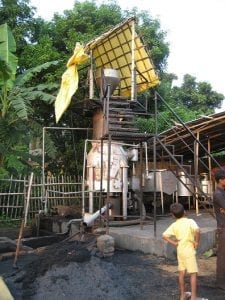
Agriculture
November 9, 2023

Agriculture
November 9, 2023
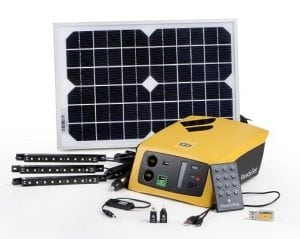
Agriculture
November 9, 2023
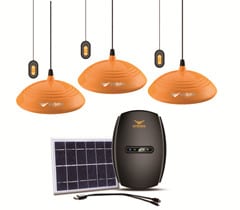
Agriculture
November 9, 2023

Agriculture
November 9, 2023
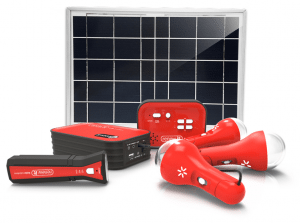
Agriculture
November 9, 2023
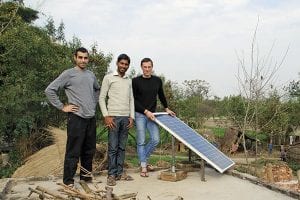
Agriculture
November 9, 2023

Agriculture
November 9, 2023
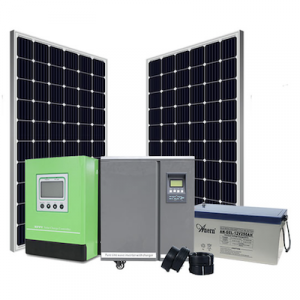
Agriculture
November 9, 2023
Have thoughts on how we can improve?
Give Us Feedback
David Fulford says:
As a “research to application” process, the pee-power microbial fuel cell system seems to have good potential. There are possible problems that have not yet been faced, but these can only be discovered as the system is used in practice. For example, other microbes could displace the ones that are generating electricity, thus causing it to fail. Only long term use in practical applications can prove whether this might happen.
Comments:
-Links should target/open new tabs/windows.
Manufacturer specified performance targets: The target listed is very old, a note for old codes should say something along the lines of code reference out of date or superseded.
Manufacturer specified performance targets: The target listed is very old, a note for old codes should say something along the lines of code reference out of date or superseded.
Some links to Asana require login. Links behind log ins or paywalls should be noted.
Design specifications: Check conversions: 4′ usually converts as 1.2m; 8′ is 2.4m; 8lbs = 3.6kg (dont use “kilos”)
Hi I run a small community based charity in Ghana and build toilets and libraries I would like to install this product in one I am renovating in Lolobi ( see http://www.communityactionghana.org) where can I get one how much do they cost